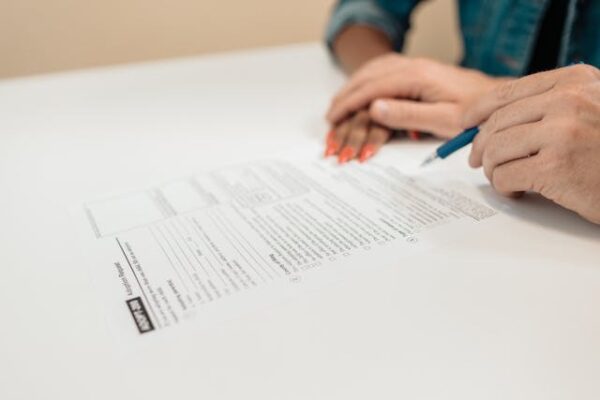If you’re living in the UK on a spouse visa (also known as a partner visa), you’ll likely need to apply for an extension after 2.5 years to remain lawfully in the country. The UK spouse visa is initially granted for 30 months, after which visa holders must apply for an extension under the FLR(M) route – Further Leave to Remain as a partner.
This step is vital. Without it, your legal status in the UK will lapse, and it could affect your future right to apply for Indefinite Leave to Remain (ILR) or British citizenship.
In this blog, Axis Solicitors explains the full process of applying for a spouse visa extension after 2.5 years, including eligibility, financial and English language requirements, required documents, common reasons for refusal, and how to avoid mistakes that cost time and money.
Eligibility Criteria for Spouse Visa Extension
To apply for a spouse visa extension after 2.5 years, you must continue to meet the same core requirements as when you were first granted the visa. These requirements ensure that your relationship remains genuine and that you can support yourselves financially without recourse to public funds.
Below is a detailed breakdown of the key eligibility criteria under the FLR(M) category.
1. Relationship Requirements
You must still be in a genuine and subsisting relationship with your British citizen or settled partner.
You must also:
- Have lived together continuously since being granted your initial visa.
- Provide evidence of cohabitation across the 2.5-year period (e.g., joint bills, tenancy agreements, correspondence).
- Intend to live together permanently in the UK.
The Home Office scrutinises relationship evidence closely to prevent visa fraud, so it’s essential that documentation is consistent and covers the full period.
2. Immigration Status and Residence
You must currently hold a valid spouse visa and be applying before it expires. Overstaying, even by one day, can jeopardise your chances of approval unless there is a compelling reason, such as medical or legal grounds.
You must also have lived in the UK continuously on the spouse visa, except for short, permitted absences (typically not exceeding 180 days in any 12-month period).
3. Financial Requirement
One of the most critical parts of the application is meeting the financial requirement, which proves that you and your partner can support yourselves without relying on public funds.
The minimum gross annual income threshold is:
- £18,600 for the applicant and sponsor (the British/settled partner).
- An additional £3,800 for one dependent child and £2,400 for each additional child (who is not British, settled, or an EEA national).
Income can be from employment, self-employment, non-employment income (such as rental or dividends), savings, or a combination of sources.
We’ll cover this in more depth in the Financial Requirement section later in this guide.
4. English Language Requirement
Applicants must meet the English language requirement by:
- Passing an A2 level English speaking and listening test from an approved provider (this is higher than the A1 level required for the initial visa).
- OR proving that they are from a majority English-speaking country.
- OR holding a degree taught in English (confirmed by NARIC if it’s from a non-UK institution).
This requirement must be met again, even if it was previously satisfied at A1 level.
5. Suitability Requirements
You must not fall for refusal under the suitability grounds, which include:
- Criminal convictions
- False representations or fraud
- Debt to the NHS or unpaid litigation costs
- Threats to national security
The Home Office will run checks across your immigration and criminal history.
6. Adequate Accommodation
You must show that you and your family will have adequate accommodation without overcrowding or relying on public housing.
This includes:
- Private rentals or owned property
- A property provided by family or friends (with consent letters and proof of ownership)
7. Supporting Evidence
All the above must be backed by documentation. A strong application includes a well-organised bundle of evidence covering relationship history, financial support, residence, and English language skills.
The overall eligibility criteria for spouse visa extension can be confusing, for that we at Axis Solicitors are always here to assist you so that you can have a seamless experience. It’s better to leave it to the experts.
Application Process for Spouse Visa Extension (FLR(M))
Applying for a spouse visa extension after 2.5 years involves completing the FLR(M) (Further Leave to Remain – Marriage) form and submitting a comprehensive portfolio of supporting documents. The process must be carefully followed to avoid delays or refusal.
Here’s a step-by-step guide to what you need to do.
1. When to Apply
You should apply before your current spouse visa expires—ideally within the final 28 days of your current 2.5-year period. Applying too early may reduce your time on the visa and affect your ILR eligibility in future. Late applications risk rejection unless there’s a valid reason, such as medical issues.
2. Complete the Online FLR(M) Form
Applications for FLR(M) are submitted online through the UK Visas and Immigration (UKVI) website. The form includes questions about:
- Your relationship history
- Financial situation
- Employment status
- Current accommodation
- Travel and immigration history
- Dependants (if applicable)
It’s vital to answer truthfully and consistently, as discrepancies can lead to refusal.
Once submitted, you’ll receive a checklist and appointment booking link for your biometric enrolment.
3. Pay the Application Fee and Immigration Health Surcharge (IHS)
As of April 2025, the fees for a spouse visa extension application are:
- Application fee: £1,048
- Immigration Health Surcharge (IHS): £1,560 (for 2.5 years at £624/year)
These are mandatory and must be paid online before your application can proceed. If you cannot afford the fee, you may apply for a fee waiver, but strict criteria apply and it can delay the process.
4. Book and Attend Biometric Appointment
After paying your fees, you must book a UKVCAS appointment (UK Visa and Citizenship Application Services) to provide your:
- Fingerprints
- Photograph
- Signature
Some centres offer enhanced services for faster processing or out-of-hours appointments, though these incur additional costs.
You may also upload your supporting documents online before attending or choose to have UKVCAS staff scan them for you.
5. Upload Supporting Documents
You’ll need to upload all supporting evidence via the Sopra Steria platform or bring physical documents to your appointment, depending on your preference and the centre’s facilities.
The quality and completeness of your documentation significantly impact the outcome. Clear, well-labelled, and logically arranged evidence is key.
We’ll include a full document checklist in the next section to help you avoid omissions.
6. Wait for a Decision
Once you’ve submitted your biometrics and documents, the Home Office will process your application.
Processing Times:
- Standard service: Around 8 weeks
- Priority service: Around 5 working days (for an additional £500)
- Super priority service: Next working day (for an additional £1,000)
During this time, you can usually remain in the UK and continue working under Section 3C leave if you applied before your visa expired.
7. Receive Your BRP (Biometric Residence Permit)
If successful, you’ll receive a new BRP card valid for another 2.5 years under the spouse visa route.
This card confirms your lawful immigration status and is required for work, travel, and accessing public services.
8. Prepare for ILR
Once your extension is granted, you’ll typically be eligible to apply for Indefinite Leave to Remain (ILR) after completing 5 years on the spouse visa route. Keeping records and maintaining visa compliance during your extension is vital for a successful ILR application.

Document Checklist for Spouse Visa Extension (UK)
Submitting a complete and well-organised set of supporting documents is essential for a successful spouse visa extension application. The Home Office does not allow you to submit further evidence later unless requested, so what you submit initially is critical.
This section provides a comprehensive checklist of documents required under the FLR(M) route, tailored for those extending their visa after 2.5 years in the UK.
1. Identity and Immigration Documents
- Current Biometric Residence Permit (BRP)
- Passport (yours and your sponsor’s)
- Any previous passports used for UK travel
- UK visa stamps or previous BRPs (if relevant)
2. Relationship Evidence
You must prove your relationship is genuine and ongoing. Include:
- Marriage or civil partnership certificate
- Evidence of cohabitation for the past 2.5 years – at least 6 items spread evenly:
- Utility bills
- Council tax statements
- Joint bank account statements
- NHS letters
- Tenancy agreement or mortgage documents
- Photos together (limited; not compulsory but can help)
- Letters from family or friends (optional; not strong on their own)
3. Financial Documents
Depending on how you meet the financial requirement, you will need to include different evidence:
A. If Employed:
- Last 6 months’ payslips
- Corresponding bank statements
- Letter from employer confirming:
- Employment status
- Length of employment
- Salary
- Type of contract
- Company contact details
B. If Self-Employed:
- Most recent SA302 tax return
- HMRC tax year overview
- Business bank statements
- Accountant’s letter
- Invoices/contracts (if applicable)
C. If Using Savings:
- 6 months’ bank statements showing cash savings
- Proof that savings have been held for the full 6 months
- Evidence of source of savings if large deposit made recently
4. Accommodation Documents
You must show your accommodation is adequate and will not be overcrowded:
- Tenancy agreement or mortgage statement
- Letter from landlord or housing association (if applicable)
- Property inspection report (optional but helpful)
- Council tax bills or utility bills showing your address
5. English Language Evidence
To extend your spouse visa, you must now meet the A2 level English language requirement.
Submit one of the following:
- Pass certificate from a Secure English Language Test (SELT) provider at A2 level
- Degree certificate (UK-based or NARIC-approved if overseas)
- Passport from a majority English-speaking country (e.g. USA, Canada, Australia)
6. Other Supporting Documents
- Completed FLR(M) form submission sheet
- Cover letter (optional but recommended, especially if explaining unusual circumstances)
- Evidence of children’s status (if applying with dependants)
- Proof of previous applications or decisions (if any issues arose earlier)
7. Optional but Useful
- Chronology of your relationship (timeline or summary)
- Letter from both partners explaining the relationship and current circumstances
- Previous Home Office correspondence or decision letters
Ensuring all the documents can be troublesome, for that we at Axis Solicitors are always here to assist you so that you can have a seamless experience.
Common Reasons for Spouse Visa Extension Refusals
A significant number of applicants face refusal when applying for a Spouse Visa Extension After 2.5 Years. While many of these refusals could have been avoided, they typically result from documentation issues, misunderstandings of the requirements, or administrative errors.
At Axis Solicitors, we routinely assist clients who come to us after being refused, helping them correct mistakes and secure their visa. Understanding the most common reasons for refusal can dramatically improve your chances of a successful Spouse Visa Extension After 2.5 Years.
1. Insufficient Proof of a Genuine Relationship
A key requirement for a Spouse Visa Extension After 2.5 Years is to prove that your marriage or civil partnership is genuine and ongoing. Many applications are refused due to weak or inconsistent evidence.
Common issues:
- Lack of joint documents proving cohabitation
- Gaps in shared address history
- Different addresses shown on key documents
- Minimal interaction shown in communications
How to avoid it: Provide a wide range of documents showing continuous cohabitation, such as utility bills, joint bank accounts, tenancy agreements, and NHS letters — covering the full 2.5-year period.
2. Failing to Meet the Financial Requirement
The financial threshold is a strict part of the Spouse Visa Extension After 2.5 Years process. If the Home Office is not satisfied that the income or savings threshold is met, the application will be refused.
Common issues:
- Income falling below £18,600 (or the higher amount required for children)
- Incomplete payslips or missing employer letters
- Inconsistent income figures between documents
- Incorrect use of combined income sources
How to avoid it: Make sure you submit the correct combination of income and/or savings. Documents must match precisely and comply with Appendix FM-SE. Get advice from a solicitor if using self-employment income or cash savings.
3. Applying Too Late
A late application for a Spouse Visa Extension After 2.5 Years can lead to rejection due to overstaying. The Home Office takes deadlines seriously, and applications made after the visa expiry date are rarely accepted without valid reasons.
Common issues:
- Overlooking visa expiry date
- Delays in gathering documents
- Relying on postal submissions instead of online process
How to avoid it: Apply within the last 28 days of your visa validity. Prepare documents well in advance and don’t delay submission unnecessarily.
4. Missing or Incorrect Documentation
The Home Office may refuse your Spouse Visa Extension After 2.5 Years if any mandatory documents are missing or improperly submitted — regardless of whether you meet the actual criteria.
Common issues:
- Missing English language test certificate
- Incomplete bank statements
- No translations for non-English documents
- Unreadable or poorly scanned files
How to avoid it: Follow a detailed document checklist (such as the one earlier in this guide). Use certified translations where needed and scan files clearly. All documentation should be submitted digitally via the UKVCAS portal.
5. English Language Requirement Not Met
Applicants must demonstrate A2 level English to qualify for a Spouse Visa Extension After 2.5 Years. If you submit an A1 certificate or use a test from a non-approved provider, the Home Office will reject the application.
Common issues:
- Submitting a previous A1 level test
- Expired English test certificates
- Using a provider not approved by UKVI
How to avoid it: Take an A2 speaking and listening test from a Home Office-approved SELT provider before your application and upload the certificate with your documents.
6. Mistakes on the Application Form
The FLR(M) form for your Spouse Visa Extension After 2.5 Years must be filled out with care. Even small mistakes or inconsistencies can cause serious delays or refusals.
Common issues:
- Contradictions with previous visa applications
- Incorrect personal details
- Incomplete answers or skipped sections
- Wrong income category selected
How to avoid it: Have your application reviewed by an immigration solicitor before submission. They can ensure your answers are accurate, consistent, and legally sound.
7. Breaching Suitability Requirements
A Spouse Visa Extension After 2.5 Years can also be refused if you fall short on suitability criteria. This includes behaviour or history that the Home Office sees as incompatible with continued residence in the UK.
Common issues:
- Criminal convictions not disclosed
- Unpaid NHS debt
- Previous visa deception or false documents
- Immigration breaches or overstaying
How to avoid it: Be honest in your application. If you have previous convictions or breaches, explain them clearly with supporting evidence. Legal representation is strongly recommended in such cases.
8. Weak or No Cover Letter
A well-prepared cover letter can often clarify minor issues or explain exceptional circumstances in a Spouse Visa Extension After 2.5 Years application. Many applicants skip this step — to their detriment.
Common issues:
- No explanation of unusual family or income circumstances
- No support for discretionary requests (e.g. Article 8 grounds)
- Missed opportunity to explain documentary gaps
How to avoid it: Include a concise cover letter outlining your case and any points that require clarification. It’s particularly important for non-standard applications or those relying on exceptions.
How Axis Solicitors Can Help with Your Spouse Visa Extension
Extending your UK spouse visa after 2.5 years is a pivotal step in your immigration journey. It not only secures your right to remain in the UK but also moves you closer to obtaining Indefinite Leave to Remain (ILR) and, eventually, British citizenship.
While the process may appear straightforward, even minor errors can lead to significant consequences — including delays, refusals, or even removal from the UK. That’s where Axis Solicitors steps in.
As experienced immigration solicitors regulated by the SRA (Solicitors Regulation Authority), we provide end-to-end support tailored to your situation. Contact Axis Solicitors for your initial assessment.
Frequently Asked Questions
1. When should I apply for my Spouse Visa Extension After 2.5 Years?
You should apply for your Spouse Visa Extension After 2.5 Years within the final 28 days before your current visa expires. Applying earlier may affect your future ILR eligibility, while applying late may result in refusal or loss of legal status.
2. What happens if I apply for a Spouse Visa Extension After 2.5 Years after my visa expires?
Applying late for a Spouse Visa Extension After 2.5 Years means you risk becoming an overstayer. The Home Office may still consider your application under exceptional circumstances, but the risk of refusal is significantly higher.
3. Can I continue working in the UK while my Spouse Visa Extension After 2.5 Years is being processed?
Yes. If you apply for your Spouse Visa Extension After 2.5 Years before your current visa expires, you will be covered under Section 3C leave. This allows you to remain in the UK and continue working legally while awaiting a decision.
4. Do I need to meet the financial requirement again for my Spouse Visa Extension After 2.5 Years?
Yes. You must meet the financial requirement again at the time of applying for your Spouse Visa Extension After 2.5 Years. This includes earning at least £18,600 (or more if you have non-British children) or qualifying through cash savings.
5. Can I use savings to qualify for a Spouse Visa Extension After 2.5 Years?
Yes. If you have £62,500 in savings held for at least 6 months, you can use this to meet the financial requirement for your Spouse Visa Extension After 2.5 Years. Savings can also be combined with employment income under certain categories.
6. What English language level is required for a Spouse Visa Extension After 2.5 Years?
You need to demonstrate A2 level English in speaking and listening from a Home Office-approved provider when applying for your Spouse Visa Extension After 2.5 Years, unless you’re exempt due to nationality or academic qualifications.
7. How long does it take to process a Spouse Visa Extension After 2.5 Years?
The standard processing time for a Spouse Visa Extension After 2.5 Years is up to 8 weeks. Priority (5-day) and super priority (next-day) services are available at an extra cost, depending on appointment availability and document complexity.
8. Can I include my children in the Spouse Visa Extension After 2.5 Years application?
Yes. You can include children as dependants in your Spouse Visa Extension After 2.5 Years application, provided they are under 18 and meet the eligibility criteria. A higher financial requirement will apply if they are not British or settled.
9. Can I travel abroad while my Spouse Visa Extension After 2.5 Years is pending?
No. If you travel outside the UK after submitting your Spouse Visa Extension After 2.5 Years, your application will be considered withdrawn. You must remain in the UK until a decision has been made and your BRP has been issued.
10. What happens after my Spouse Visa Extension After 2.5 Years is approved?
Once your Spouse Visa Extension After 2.5 Years is granted, you’ll receive a new Biometric Residence Permit (BRP) valid for another 30 months. After completing 5 years in total, you may be eligible for Indefinite Leave to Remain (ILR).




